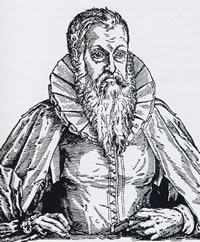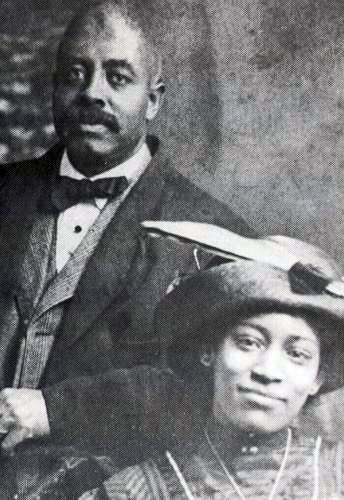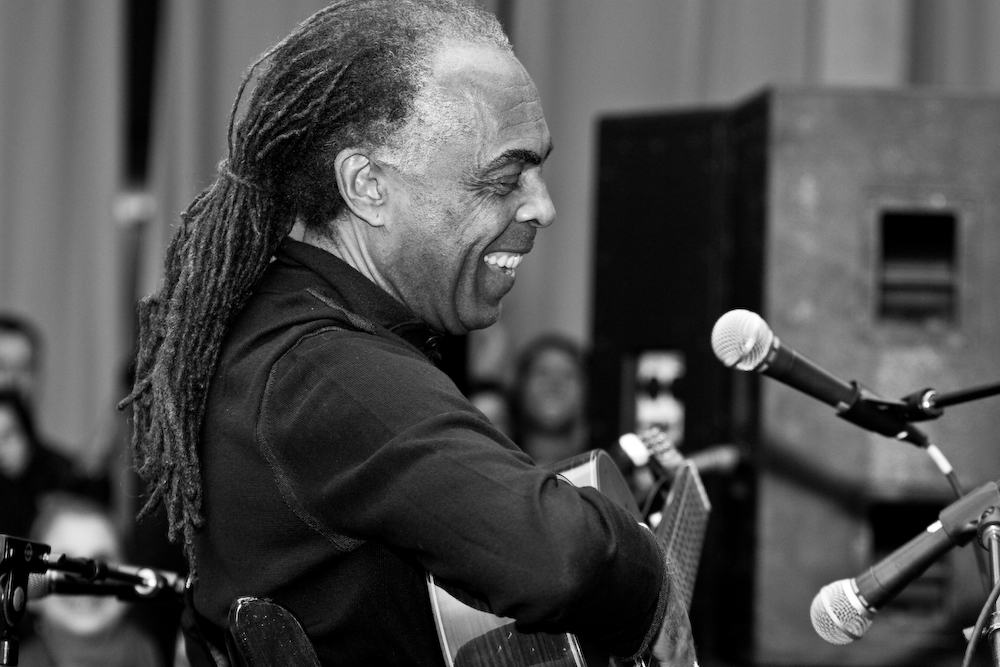|
Manifesto Antropófago
The Anthropophagic Manifesto (Portuguese: ') was published in 1928 by the Brazilian poet and polemicist Oswald de Andrade, a key figure in the cultural movement of Brazilian Modernism and contributor to the publication '' Revista de Antropofagia''. It was inspired by "'' Abaporu''," a painting by Tarsila do Amaral, modernist artist and wife of Oswald de Andrade. The essay was translated to English in 1991 by Leslie Bary; Content Written in poetic prose in the modernist style of ''Une Saison en Enfer'' by Rimbaud, the ''Manifesto Antropófago'' is more directly political than Oswald's previous manifesto, ''Manifesto Pau-Brasil'', which was created in the interest of propagating a Brazilian poetry for export. The "Manifesto" has often been interpreted as an essay in which the main argument proposes that Brazil's history of "cannibalizing" other cultures is its greatest strength, while playing on the modernists' primitivist interest in cannibalism as an alleged tribal rite. Cann ... [...More Info...] [...Related Items...] OR: [Wikipedia] [Google] [Baidu] |
Tarsila Do Amaral
Tarsila de Aguiar do Amaral (; 1 September 1886 – 17 January 1973) was a Brazilian painter, draftswoman, and translator. She is considered one of the leading Latin American modernist artists, and is regarded as the painter who best achieved Brazilian aspirations for nationalistic expression in a modern style.Lucie-Smith, Edward. Latin American Art of the 20th Century. London: Thames & Hudson Ltd, 2004: 42. As a member of the '' Grupo dos Cinco'', Tarsila is also considered a major influence in the modern art movement in Brazil, alongside Anita Malfatti, Menotti Del Picchia, Mário de Andrade, and Oswald de Andrade. She was instrumental in the formation of the aesthetic movement, ''Antropofagia'' (1928–1929); in fact, Tarsila was the one with her celebrated painting, ''Abaporu'', who inspired Oswald de Andrade's famous ''Manifesto Antropófago''.C. Jauregui "Antropofagia" https://www.academia.edu/6998258/Antropofagia_Cultural_cannibalism_ Early life and education Tarsila do A ... [...More Info...] [...Related Items...] OR: [Wikipedia] [Google] [Baidu] |
Hans Staden
Hans Staden (c. 1525 – c. 1576) was a German soldier and explorer who voyaged to South America in the middle of the sixteenth century, where he was captured by the Tupinambá people of Brazil. He managed to survive and return safe to Europe. In his widely read '' True History: An Account of Cannibal Captivity in Brazil'', he claimed that the native people that held him captive practiced cannibalism. Trips to South America Staden was born in Homberg in the Landgraviate of Hesse. He had received a good education and was in moderate circumstances when desire for travel led him to enlist in 1547 on a ship that was bound for Brazil. He returned from this first trip on 8 October 1548, and, going to Seville, enlisted for a second trip as a volunteer in an expedition for Río de la Plata which sailed in March 1549. On reaching the mouth of the river, two ships sank in a storm. After vainly trying to build a barque, part of the shipwrecked crew set out overland for Asunción. The rest o ... [...More Info...] [...Related Items...] OR: [Wikipedia] [Google] [Baidu] |
Antonio Peticov
Antonio Peticov (born July 2, 1946) is a Brazilian painter, designer, sculptor, and engraver. Autodidacticism, Self-taught, Peticov's approach is based on systematic personal research in the history of art and its integration into avant-garde artistic movements in the second half of the 1960s. He also specialized in sacred geometry and the golden ratio, giving his work a strong mathematics and art, mathematical character. In 1967, together with artists Aldir Mendes de Souza and Gilberto Salvador, he founded the group Vanguarda Jovem no Teatro de Arena, Arena, participating in several exhibitions. During the same period, he began his involvement with the Tropicália movement. He was president of the cooperative of Visual Artists of Brazil between 2003 and 2007, and is a member of the Lewis Carroll Society of North America. He founded and directed the Núcleo de Arte Contemporânea (NAC) in São Paulo, between 1999 and 2006. In 2016, at the age of 70, he opened the Antonio Peticov ... [...More Info...] [...Related Items...] OR: [Wikipedia] [Google] [Baidu] |
Torquato Neto
Torquato Pereira de Araújo Neto (November 9, 1944 – November 10, 1972) was a Brazilian journalist, poet and songwriter. He is perhaps best known as a lyricist for the Tropicália counterculture movement, which later expanded its influence to Música popular brasileira. He worked with Gal Costa, Gilberto Gil, Edu Lobo and Waly Salomão. He committed suicide at the age of 28. Neto was the son of a public prosecutor and a primary schoolteacher from Teresina, the capital of the northeastern Brazilian state of Piauí. At the age of 16, he moved to Salvador, Bahia, to attend secondary school at the Colégio Nossa Senhora da Vitória, where he was a classmate of Gilberto Gil. While there, he also worked as an assistant on Glauber Rocha's first feature film, '' Barravento''. Neto became actively involved in the cultural scene in Salvador, where he met Caetano Veloso, Gal Costa, and Maria Bethânia. In 1962, he moved to Rio de Janeiro to study journalism at university but never gra ... [...More Info...] [...Related Items...] OR: [Wikipedia] [Google] [Baidu] |
Gilberto Gil
Gilberto Passos Gil Moreira (; born 26 June 1942), is a Brazilian singer-songwriter and politician, known for both his musical innovation and political activism. From 2003 to 2008, he served as Brazil's Minister of Culture in the administration of President Luiz Inácio Lula da Silva. Gil's musical style incorporates an eclectic range of influences, including rock, Brazilian genres including samba, African music, and reggae. Gil started to play music as a child and was a teenager when he joined his first band. He began his career as a bossa nova musician and grew to write songs that reflected a focus on political awareness and social activism. He was a key figure in the Música popular brasileira and tropicália movements of the 1960s, alongside artists such as longtime collaborator Caetano Veloso. The Brazilian military regime that took power in 1964 saw both Gil and Veloso as a threat, and the two were held for nine months in 1969 before they were told to leave the country ... [...More Info...] [...Related Items...] OR: [Wikipedia] [Google] [Baidu] |
Ou Panis Et Circencis
OU or Ou or ou may stand for: Universities United States * Oakland University in Oakland County, Michigan * Oakwood University in Huntsville, Alabama * Oglethorpe University in Atlanta, Georgia * Ohio University in Athens, Ohio * Olivet University in San Francisco, California * University of Oklahoma in Norman, Oklahoma Japan * Osaka University, a national research university * Okayama University, a national university * Onomichi City University, a public university in Hiroshima Prefecture * Otemae University, a private university in Hyogo Prefecture * Ohu University, a private university in Fukushima Prefecture Other countries * Hong Kong Metropolitan University, Hong Kong, previously the Open University of Hong Kong * Osnabrück University, Germany * Open University, United Kingdom * Open University of Mauritius, Mauritius * Osmania University, India * University of Otago, New Zealand * University of Ottawa, Canada * University of Oxford, United Kingdom Language and writing * ... [...More Info...] [...Related Items...] OR: [Wikipedia] [Google] [Baidu] |
Jimi Hendrix
James Marshall "Jimi" Hendrix (born Johnny Allen Hendrix; November 27, 1942September 18, 1970) was an American guitarist, singer and songwriter. Although his mainstream career spanned only four years, he is widely regarded as one of the most influential electric guitarists in the history of popular music, and one of the most celebrated musicians of the 20th century. The Rock and Roll Hall of Fame describes him as "arguably the greatest instrumentalist in the history of rock music." Born in Seattle, Washington, Hendrix began playing guitar at the age of 15. In 1961, he enlisted in the US Army, but was discharged the following year. Soon afterward, he moved to Clarksville then Nashville, Tennessee, and began playing gigs on the chitlin' circuit, earning a place in the Isley Brothers' backing band and later with Little Richard, with whom he continued to work through mid-1965. He then played with Curtis Knight and the Squires before moving to England in late 1966 after bassis ... [...More Info...] [...Related Items...] OR: [Wikipedia] [Google] [Baidu] |
The Beatles
The Beatles were an English Rock music, rock band, formed in Liverpool in 1960, that comprised John Lennon, Paul McCartney, George Harrison and Ringo Starr. They are regarded as the Cultural impact of the Beatles, most influential band of all time and were integral to the development of counterculture of the 1960s, 1960s counterculture and popular music's recognition as an art form. Rooted in skiffle, beat music, beat and 1950s rock and roll, rock 'n' roll, their sound incorporated elements of classical music and traditional pop in innovative ways; the band also explored music styles ranging from folk music, folk and Music of India, Indian music to Psychedelic music, psychedelia and hard rock. As Recording practices of the Beatles, pioneers in recording, songwriting and artistic presentation, the Beatles revolutionised many aspects of the music industry and were often publicised as leaders of the era's Baby boomers, youth and sociocultural movements. Led by primary songwriter ... [...More Info...] [...Related Items...] OR: [Wikipedia] [Google] [Baidu] |
Tropicália
Tropicália (), also known as Tropicalismo (), was a Brazilian artistic movement that arose in the late 1960s. It was characterized by the amalgamation of Brazilian genres—notably the union of the pop culture, popular and the avant-garde, as well as the melding of Brazilian tradition and foreign traditions and styles. Today, Tropicália is chiefly associated with the musical faction of the movement, which merged Music of Brazil, Brazilian and Music of Africa, African rhythms with British and American psychedelic music, psychedelia and pop rock. The movement also included works of film, theatre, and poetry. The term Tropicália (Tropicalismo) has multiple connotations in that it played on images of Brazil being that of a "tropical paradise".Veloso, Caetano, Barbara Einzig, and Isabel de Sena. 2003. Tropical truth: a story of music and revolution in Brazil. Tropicalia was presented as a "field for reflection on social history". The movement was begun by a group of musicians fro ... [...More Info...] [...Related Items...] OR: [Wikipedia] [Google] [Baidu] |
Caetano Veloso
Caetano Emanuel Viana Teles Veloso (; born 7 August 1942) is a Brazilian composer, singer, guitarist, writer, and political activist. Veloso first became known for his participation in the Brazilian musical movement Tropicalismo, which encompassed theatre, poetry and music in the 1960s, at the beginning of the Brazilian military dictatorship that took power in 1964. He has remained a constant creative influence and best-selling performing artist and composer ever since. Veloso has won nine Latin Grammy Awards and two Grammy Awards. On November 14, 2012, Veloso was honored as the Latin Recording Academy Person of the Year. Veloso was one of seven children born into the family of José Telles Velloso (commonly known as ''Seu Zeca''), a government official, and Claudionor Viana Telles Veloso (known as ''Dona Canô''). He was born in the city of Santo Amaro da Purificação, in Bahia, a state in the eastern area of Brazil, but moved to Salvador, the state capital, as a college ... [...More Info...] [...Related Items...] OR: [Wikipedia] [Google] [Baidu] |
Hélio Oiticica
Hélio Oiticica (; July 26, 1937 – March 22, 1980) was a Brazilian visual artist, sculptor, painter, performance artist, and theorist, best known for his participation in the Neo-Concrete Movement, for his innovative use of color, and for what he later termed "environmental art", which included ''Parangolés'' and ''Penetrables,'' like the famous ''Tropicália.'' Oiticica was also a filmmaker and writer. Early life and education Oiticica was born in Rio de Janeiro, Brazil to mother Ângela Santos Oiticica and father José Oiticica Filho. He had two younger brothers, architect César Oiticica, and Cláudio Oiticica. Oiticica's family was educated and involved in liberal politics. His father taught mathematics, was an engineer, entomologist, and lepidopterologist, a scientist who researched butterflies. He was also an avid photographer, creating experimental photographs that were new to Brazil. His grandfather was a well known philologist, who studied literary texts an ... [...More Info...] [...Related Items...] OR: [Wikipedia] [Google] [Baidu] |
Augusto De Campos
Augusto de Campos (born 14 February 1931, São Paulo) is a Brazilian writer who (with his brother Haroldo de Campos) was a founder of the Concrete poetry movement in Brazil. He is also a translator, music critic and visual artist. Work In 1952 he founded the literary magazine '' Noigandres'' with his brother. Then in 1956 he and his associates declared the beginning of a movement. Since then he has had a number of collections and honors. From the 1950s to 1970s his main works were directed towards visual poetry but from 1980 on, he intensified his experiments with new media, presenting his poems on electric billboard, videotext, neon, hologram and laser, computer graphics, and multimedia events, involving sound and music, as the plurivocal reading of CIDADECITYCITÉ with his son Cid Campos (1987–91). Four of his holographic poems in cooperation with the holographer Moysés Baumstein were included in the exhibitions TRILUZ (1986) and IDEHOLOGIA (1987). A "videoclippoem", O PU ... [...More Info...] [...Related Items...] OR: [Wikipedia] [Google] [Baidu] |






.jpg)